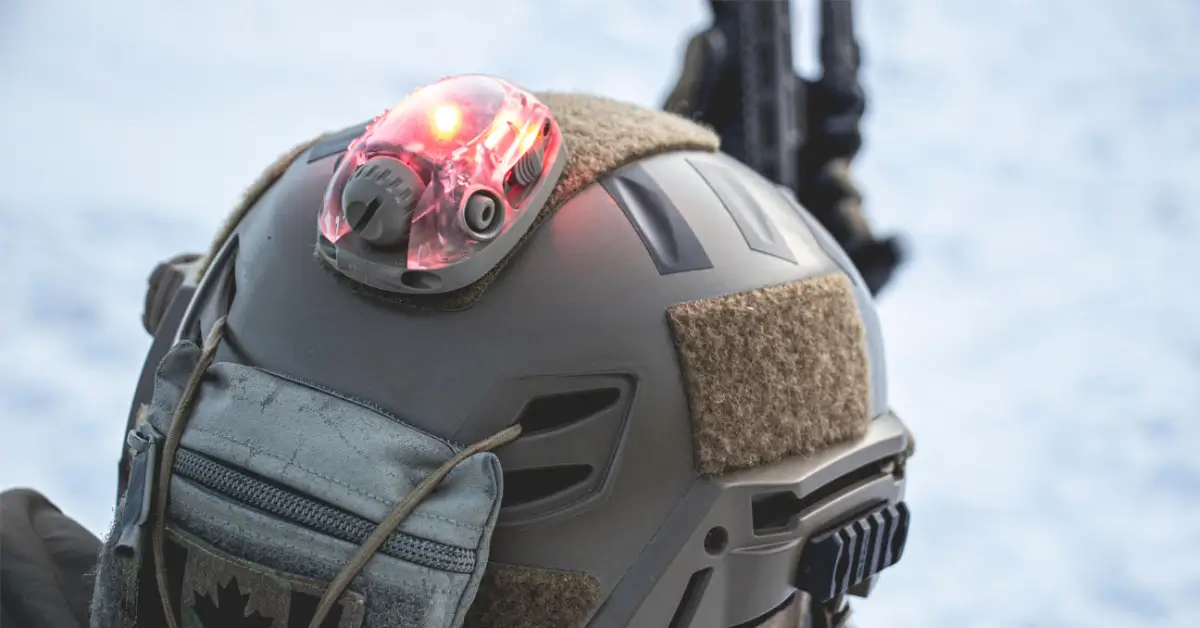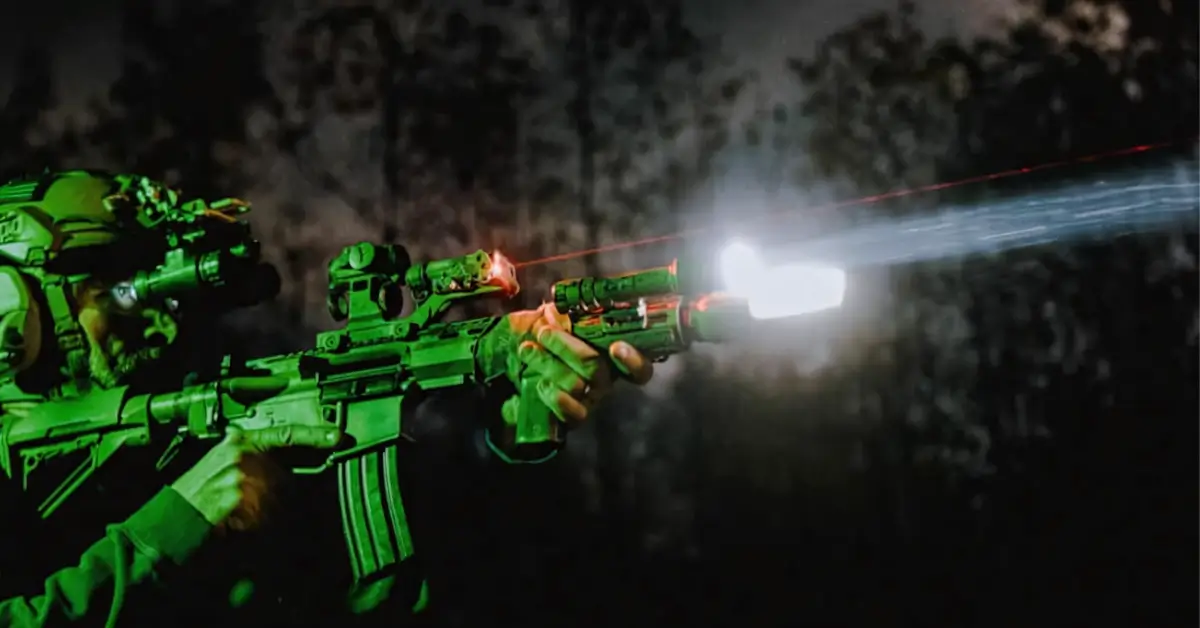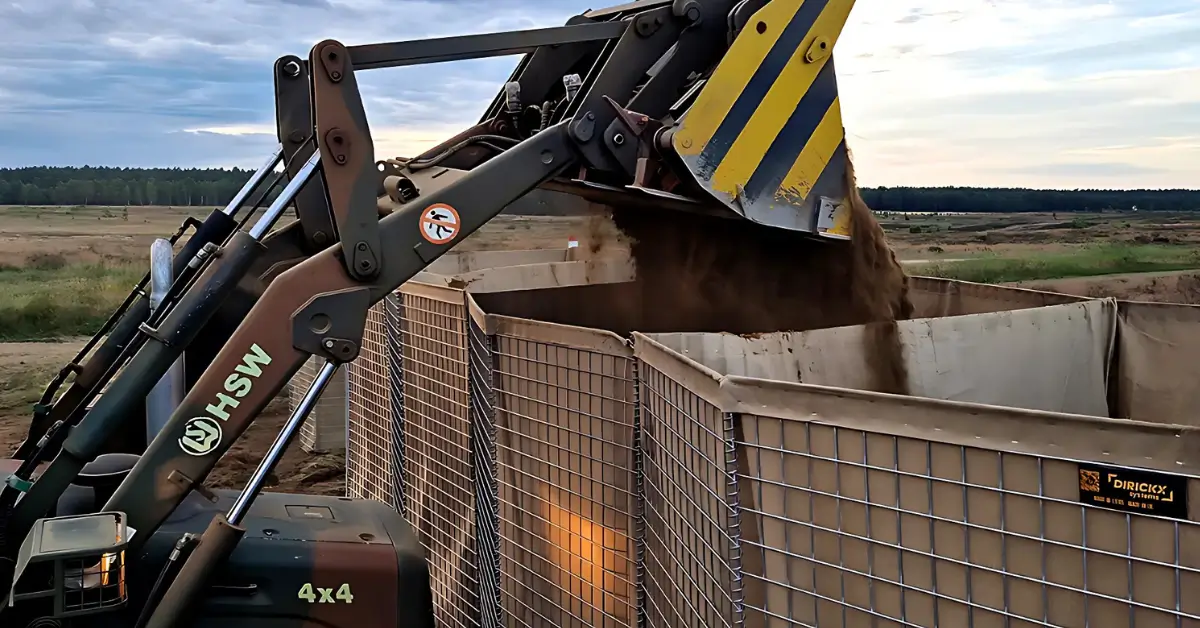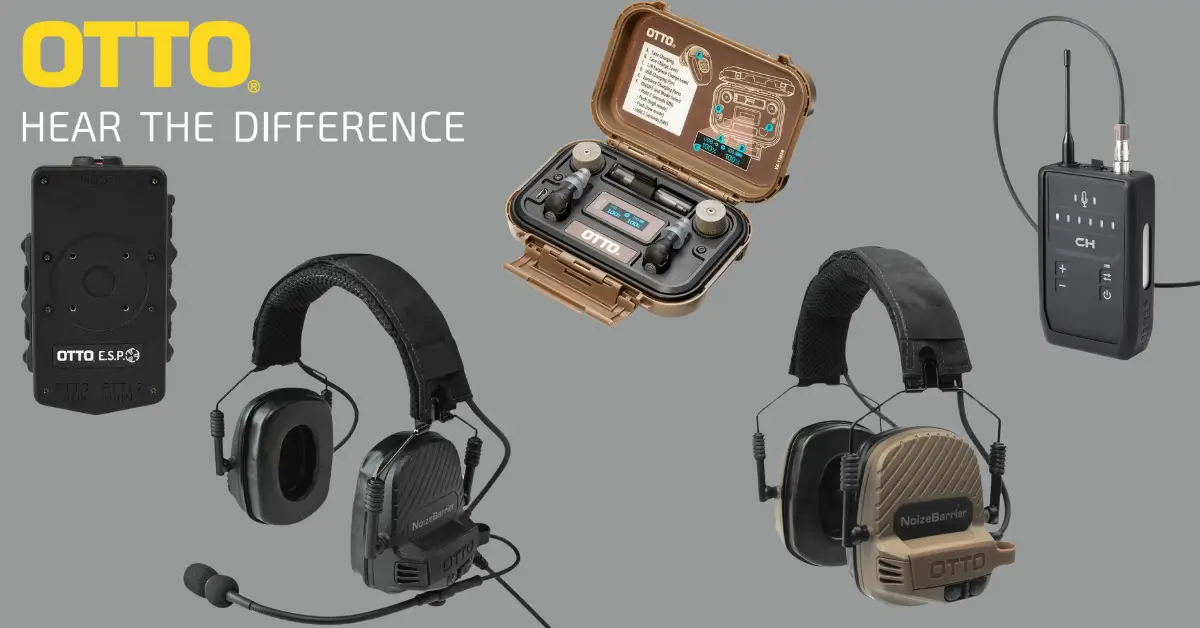Military operations often require navigating and engaging in low-light environments with limited visibility and high stakes. Whether patrolling, conducting covert missions, or traversing rugged terrain, having reliable and versatile tactical lighting can mean the difference between mission success and failure. This comprehensive guide explores the importance of tactical lighting, its applications, and the latest technologies enhancing night operations.
The Importance of Tactical Lighting in Night Operations
Effective night operations require soldiers to stay aware of their surroundings while minimising the risk of detection. Tactical lighting must balance the need for sufficient illumination with maintaining discretion. The right lighting tool enhances situational awareness, improves accuracy, and reduces fatigue in low-visibility conditions.
Key benefits of proper tactical lighting include:
- Enhanced situational awareness
- Improved target identification and acquisition
- Reduced eye strain and fatigue
- Increased operational effectiveness
- Minimised risk of detection
Real-World Examples: Tactical Lighting in Action
Operation Neptune Spear (2011)
During the raid on Osama bin Laden’s compound, Navy SEALs relied heavily on advanced tactical lighting, including night-vision goggles and weapon-mounted lights. Their ability to navigate dark corridors and identify threats in low light was crucial to the mission’s success. SEALs used IR illuminators to enhance night vision capabilities without alerting targets, allowing for swift and precise movement through the compound.
Battle of Fallujah (2004)
U.S. Marines used weapon-mounted lights and handheld flashlights during urban combat to illuminate rooms, identify combatants, and minimise civilian casualties in close-quarters environments. The ability to quickly switch between white light for positive identification and IR for stealth movement proved invaluable in complex urban terrain.
Operation Enduring Freedom (2001-2014)
Coalition forces in Afghanistan often used a combination of headlamps, weapon-mounted lights, and IR illuminators to navigate terrain, detect IEDs, and engage threats while maintaining a low visual profile. Multi-function lights allowed troops to adjust brightness and switch between visible and IR modes as needed, enhancing adaptability in varying combat situations.
These scenarios demonstrate how proper tactical lighting can make the difference between success and failure in high-stakes operations.
Key Focus Areas for Tactical Lighting
When selecting tactical lighting for military use, several performance factors directly impact effectiveness:
Brightness and Beam Control
Jasność: Tactical lights must provide enough illumination for tasks without compromising stealth. Adjustable brightness settings (typically ranging from 5 to 1000+ lumens) give soldiers control over light levels in different scenarios.
Beam Control: The ability to focus or diffuse the light beam adds versatility. A focused beam works for long-range identification, while a wide beam is better for close-quarters tasks.
Battery Life and Power Management
Żywotność baterii: Long-lasting batteries are crucial in extended operations where resupply is unavailable. Modern tactical lights can offer 1-50 hours of runtime depending on the mode and battery type.
Power Management: Features like power-saving modes or low-battery indicators help avoid sudden blackouts during critical moments.
Durability and Resistance to Harsh Conditions
Trwałość: Tactical lights must withstand the rigours of combat, including impacts, water, and dust. Military-grade lights are designed to be shockproof and weather-resistant, ensuring reliable performance in all environments.
Resistance: Look for lights rated IPX7 or IPX8 made from durable materials like aircraft-grade aluminium, which can withstand physical stress without adding excessive weight.
Hands-Free Operation
Headlamps: Provide adjustable brightness and angles, ideal for tasks like reading maps or setting up camp.
Weapon-Mounted Lights: Offer immediate illumination controlled directly from the firearm, enhancing accuracy and speed without sacrificing mobility.
Tactical Lighting Options
Several lighting options are essential for military personnel during night operations:
Headlamps
Kluczowe cechy: Adjustable beam angles, multi-mode operation (white, red, infrared), lightweight (typically 3-7 oz), long battery life (10-50 hours), and weather resistance (IPX4-IPX7).
Przypadek użycia: Perfect for hands-free tasks such as reading maps or maintaining equipment while staying discreet.
Handheld Torches
Kluczowe cechy: High lumens output (500-1000+ lumens), multiple brightness settings, strobe mode for signalling, water and impact resistance (1-2 meter drop protection), and compact size.
Przypadek użycia: Quick access to powerful illumination for building clearing or navigating rough terrain.
Weapon-Mounted Lights
Kluczowe cechy: Low-profile design, pressure switch activation, focused beam for target identification (typically 300-1000 lumens), and durable construction to withstand recoil (up to .50 caliber).
Przypadek użycia: Essential for close-quarters combat or night patrols where rapid target acquisition is critical.
Infrared (IR) Lighting
Kluczowe cechy: IR wavelengths compatible with military-grade night vision (typically 850-940nm), adjustable brightness, and undetectable illumination by the naked eye.
Przypadek użycia: Ideal for covert missions, allowing soldiers to operate without being detected by adversaries.
Limitations of Certain Lighting Choices
While tactical lighting offers numerous benefits, it’s important to acknowledge the limitations associated with different options:
Headlamps: While providing hands-free convenience, headlamps can be bulky and can obstruct peripheral vision, potentially limiting situational awareness.
Handheld Torches: While offering powerful illumination, handheld torches require one hand for operation, reducing mobility and increasing vulnerability in certain situations.
Weapon-Mounted Lights: While providing immediate illumination, weapon-mounted lights can add weight and complexity to a firearm, potentially affecting handling and accuracy. Additionally, they may attract attention and reveal the user’s position.
Infrared (IR) Lighting: Although IR lighting provides stealth and is compatible with night vision devices, its range can be limited, particularly in adverse weather conditions. Additionally, its effectiveness diminishes when facing targets with counter-IR measures such as night vision goggles or thermal imaging systems.
Light Discipline and Minimising Light Signature
Proper light discipline is crucial for maintaining stealth during night operations. Techniques and training should include:
- Using the minimum necessary brightness
- Employing red or blue light to preserve night vision
- Utilising IR illumination with night vision devices
- Practicing proper shielding and directional control of light sources
Emerging Technologies in Tactical Lighting
Advances in tactical lighting promise to enhance military night operations further. Some notable advancements include:
Adaptive Lighting Systems: Automatically adjust brightness and beam pattern based on ambient conditions and user activity.
AI-Assisted Illumination: Utilises AI to optimise lighting based on mission parameters, terrain, and threat levels.
Colour-Tunable LEDs: Allow on-the-fly adjustment of light colour to suit different environments.
Integrated Thermal Imaging: This technology combines white light, IR, and thermal imaging modes into a single device, reducing equipment load while enhancing situational awareness.
Energy Harvesting Technology: Extends battery life by harvesting energy from movement or ambient light.
Networked Lighting Systems: Allow squad members to control each other’s lights, enabling coordinated illumination remotely.
Konserwacja i pielęgnacja
To ensure optimal performance and longevity of tactical lighting equipment:
- Regularly inspect for damage and clean lenses
- Store batteries separately when not in use
- Keep O-rings lubricated for water resistance
- Follow manufacturer guidelines for firmware updates
- Conduct periodic function checks in various modes
Tactical Lighting: A Nighttime Essential
Tactical lighting is an essential tool for modern military operations. It allows soldiers to maintain situational awareness, execute critical tasks, and engage targets in low-light environments. The right tactical lights, whether headlamps, weapon-mounted lights, or infrared systems, enhance operational effectiveness and ensure mission success.
As technology advances, staying informed about the latest developments in tactical lighting is crucial for military personnel and decision-makers. By understanding the importance of proper illumination, light discipline, and emerging technologies, forces can better equip themselves for the challenges of night operations.
For more information on customised tactical lighting solutions tailored to your specific operational needs, please consult our MSS Defence lighting experts.




